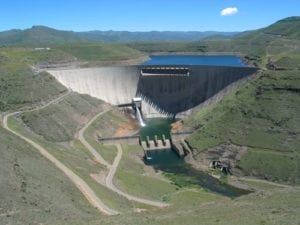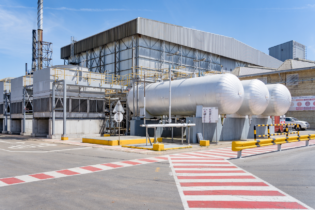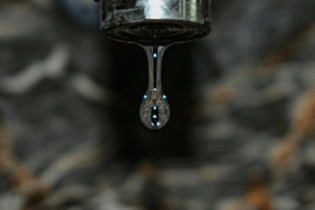President Jacob Zuma led a government delegation to Lesotho this week for the launch of phase two of the Lesotho Highlands Water Project (LHWP). As part of the launch, President Zuma and the Prime Minister of Lesotho Tom Thabane took part in a sod turning ceremony.
The LHWP will be used to augment the critical Vaal River system and further to use the Senqu/Orange River water through storing, regulating, diverting and controlling the flow of the river system. This will deliver specific quantities of this water to South Africa as well as to generate hydro-electric power in and for Lesotho. “We all have an obligation to meet the Millennium Development Goals of halving by 2015, the proportion of the population without sustainable access to safe drinking water and basic sanitation. At the same time, it is not just because of the UN development goals. The delivery of water is a priority for both economic growth and for our people as a basic human need,” Zuma said at the sod turning ceremony. Phase I The first phase of the project was completed in 2004 and comprised of the Katse and Mohale reservoirs, the Muela Hydropower station, and 124km of tunnels and associated infrastructure. It further included the construction of 265 km of gravel roads, the rehabilitated 1 133 km of roads to grade 1 standard, and the construction of 11 bridges including 3 bridges between Lesotho and South Africa in Maseru, Maputsoe and Caledonspoort. By 2010 more than 8.36 billion m3 of water was transferred to South Africa and Lesotho received R638 million from the sale of electricity generated at the Muela Hydropower Station. A number of South African entities, these including six provinces, Sasol, Eskom, and the mining sector, have all benefitted from improved water security provided by this project. As it stands, 40% of the water in the Vaal is from the LHWP. Under drought conditions, emergency water releases from the LHWP for Maseru and its surrounding areas to counter the no-flow conditions in the Caledon River.Phase II
A joint feasibility study on phase II of the LHWP was concluded in 2008. The second phase will consist of the Polihali Dam located in Mokhotlong district, a tunnel from Polihali Dam to Katse Dam, hydropower features and advanced infrastructure. According to the Department of Water Affairs, LHWP phase II embodies the SADC protocol to foster closer cooperation for judicious, sustainable and co-ordinated management, protection and utilisation of shared watercourses. Zuma assured those present of South Africa’s total commitment to this project, considering its importance and significance to both countries. “Our two governments must now ensure that this project is implemented without any further delay. The implementation of the project has to be done in accordance with the provisions of the legal instruments that our two countries signed.” Joint partnership South Africa and Lesotho signed in 2001, and renewed in 2012, an important Agreement establishing the Joint Bilateral Commission for Cooperation (JBCC) between the two sister countries. Its main objective is to promote political, economic and social cooperation. Together the countries are already working on various projects including the LHWP, the Geo-chemical Mapping Project, the Hydrological Project, and the Sani Pass Project. “We trust that these projects will bring about economic development, create employment as well as investment opportunities for the people of Lesotho. These projects also serve as a clear demonstration of the progress we have made in establishing a firm base for the further deepening of our bilateral relations, representative of the warm feelings of friendship that our peoples share,” said Zuma.







